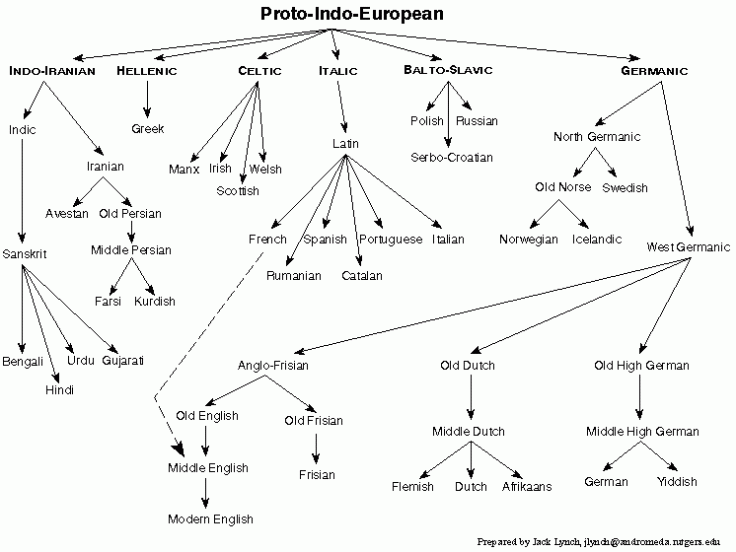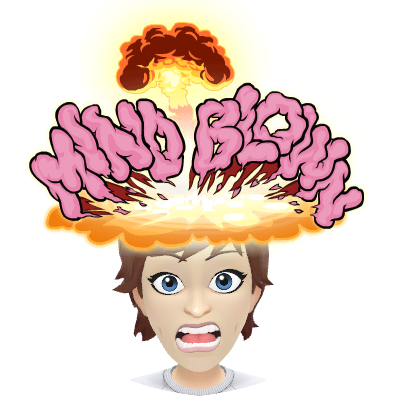I recently posted on Instagram about a lesson I did with my Spanish students that centered on my passion for linguistics and language learning. It sparked a lot of good conversation and several teachers reached out to me for a copy of my handout, which I have been emailing individually.

But instead of sending out dozens of private emails, I’ve decided it would be better to bite the bullet and create this blog post that I should have done MONTHS ago.
First of all, I have uploaded an editable copy of my handout here. Suggested editable portions are highlighted in yellow, but you are welcome to change any of the document or simply use it as a guide as you craft your own handout for students.
Blue text is hyperlinked and clicking on these links will take you to my sources or videos where you and your students can hear various languages being spoken.
Secondly, I want to explain a little about the handout, why I created it, and how it was used in class.
I’ve been teaching Spanish in southern, rural Ohio for over ten years now. In general, Spanish is the only world language offered in this area and it isn’t offered until high school. This is probably because I live in one of the least diverse areas in the entire USA. See posts here, here, and here for example. Even at the local university that enrolls 3,500 students, I am the only adjunct professor of Spanish while we have one full-time Spanish professor. There just isn’t a demand for Spanish (or any language) to be learned by the majority of those living here.
When students ask these questions, they aren’t trying to ask snide comments to get under my skin (well, some of them are), but most sincerely do not see the need for learning another language.
As such, there are many misconceptions about language learning in general. Here are a few questions I hear from students every year:
-Why do I need Spanish?
-Why can’t everyone just speak one language?
-If Spanish is the “easiest language” why is it so hard?
When students ask these questions, they aren’t trying to ask snide comments to get under my skin (well, some of them are), but most sincerely do not see the need for learning another language. Add to that the extreme frustration of not “getting it,” especially for students who have gotten straight As for years. I mean, Spanish is supposed to be “easy” right? English is the “hard” language, or so they’ve been told.
The easiest way for me to field these questions in a sincere way, is to channel the inner linguistics geek inside me. I love showing students this language chart and even have a laminated copy in my classroom:

You can find this chart and a more complex version here. One day I would LOVE to create my own chart, but for several years, I’ve used this one as a visual in my classrooms.
First, students are often shocked to find out that English is not a Latin language (where did this rumor come from anyway??) Maybe because we have so many cognates with Spanish, they’ve started believing those languages must be related. I want to cover all my thoughts on this in a future post. For now, I will just say that I’ve used this chart to show students that English and Spanish are what I call “cousins.”
This graphic is helpful because most of the languages on this chart are labeled as “Level 1, 2, and 3” languages by the Ohio Department of Education with guidance from ACTFL.
The levels signify the standard difficulty of these languages with “Level 1” being the easiest to learn and “Level 4” being the most difficult.
Languages categorized as “Level 1” and “Level 2,” for the most part, share a common alphabet with English speakers: the Latin alphabet. This is true for the Latin-based languages in “Level 1” and the languages in level 2.
In my classes, we had fun learning how to introduce ourselves in Swahili (a level 2 language spoken natively by 5 million people and by over 135 million people as a second language predominantly in Africa). Check out this short video below.
Shikamoo. Jina langu ni Tiffany. Ninafuraha kukutana na wewe.
Languages which share our alphabet are, in general, easier for us to learn. Looking at “Level 3” languages, we see different alphabets. For example, Russian uses the Cyrillic alphabet, which has more letters than our Latin alphabet.
To introduce students to Russian, I recommend this quick video that teaches numbers 1-10 in three minutes. **It is important to note that for this video, (and, similarly, in the “Level 4” language videos), students will see the language written out in Cyrillic and will also see the word transliterated below that word.
**Transliteration is different from translation. Translation is when we take a word or phrase from one language and pair it with a word or phrase which means the same thing (or is as similar as possible) in another language.
Ex. Hablo (Spanish) = I talk
With transliteration we are talking about writing out words from another language (that does not use the Latin alphabet) and transliterating those sounds into a pronounceable word using the Latin alphabet.
Ex. Привет (Russian) = Hello
But how do we pronounce that??? This is where transliteration comes into play. In the video below, you will see the Russian words followed by a transliteration (pronunciation guide) for native English speakers.
So Привет sounds like Privet. Privet is the transliteration of the word “Hello” in Russian.
After showing videos with Swahili and Russian my students were super excited and begging to see and hear what “Level 4” languages sounded like and I was so excited to blow their minds with Chinese!!
Of my 140ish students, none of them had any clue what I meant when I said that Chinese is an “intonation” language. We watched this video 2-3 times per class and some students STILL could not pick up on the tones in the following video.
This was the perfect way to demonstrate why Mandarin Chinese is classified as a “Level 4” language! The idea of “intonation” is so foreign to our ears and it takes a long time to pick up on the subtle differences in the speaker’s voice.
Oh, and to answer one of my student’s questions above, “Why can’t everyone just speak one language?” I love to give this snarky reply: “Exactly! That’s a great idea!” At this point they are shocked and confused. Is the Spanish teacher anti-Spanish?? “Let’s all speak the most widely spoken language in the world. That’s so much easier than forcing everyone to learn new languages, right?” At this point, I normally even have a few handclaps and cheers. When they get quiet I say, “Let’s forget about Spanish and we can all learn Mandarin Chinese.” Dead. Dead quiet. Strange looks. Utter shock.

Up until this point in class, nearly every single one of my students thought that English was the most widely-spoken language in the world. So twice in one class I’ve been able to blow my kids’ minds. #teachergoals !!
I’ve included video clips for Japanese and Arabic in the handout as well. It is important to note that for many “Level 4” languages, even the direction of the writing is different from ours. In Japanese, for example, you open books backwards (at least, backwards from our point of view). Some languages, like Hebrew and Arabic, are written right to left, while languages like Chinese are written top to bottom. This adds to the difficulty of learning a new language.
Note: One of my students did have some good insight. She argued that languages with a different alphabet could be easier for some people to learn because we aren’t trying to impose our pronunciation onto those same Latin letters. I think this is an excellent point!
I hope you enjoyed this blog post and I look forward to doing some more language chat in a future post.
If you use this resource in your class, please let me know how it went below in the comments section.
You can follow me on Instagram for more #hoyenclase posts. I’m also available on Twitter, Facebook, Pinterest, and TpT.


Leave a comment